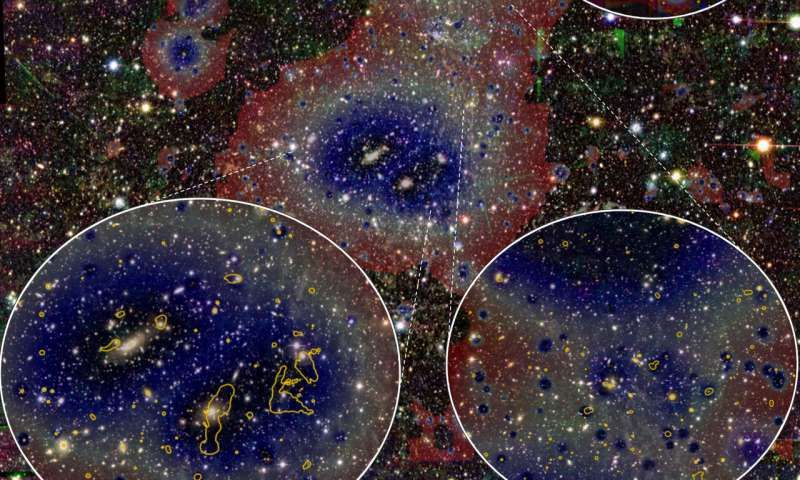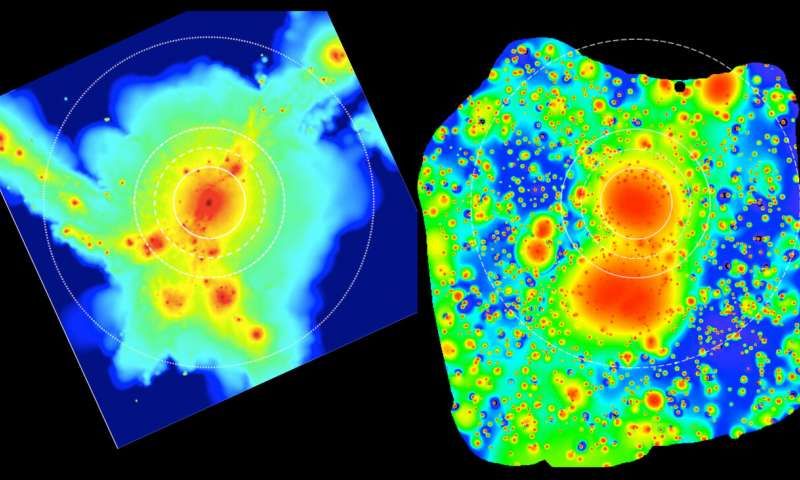Extraordinarily long threads of hot gas known as intergalactic filaments connect and surround galaxies and galaxy clusters throughout the cosmos — and scientists just discovered the longest one yet. The intergalactic filaments make up a cosmic web that stretches across the observable universe. Within this structure, galaxies are arranged in a web-like pattern, connected by and surrounded by these filaments. According to previous research, after the Big Bang jump-started our universe 13.8 billion years ago, a lot of the hydrogen gas that makes up the known matter in the universe collapsed into sheets, which broke apart further into the long, snaking filaments.

Now, scientists led by researchers at the University of Bonn in Germany have observed the longest filament ever found. The gas thread stretches an astounding 50 million light-years, and its structure aligns with predictions made by computer simulations the researchers found, according to a statement released by the University of Bonn. “According to calculations, more than half of all baryonic matter in our universe is contained in these filaments — this is the form of matter of which stars and planets are composed, as are we ourselves,” study lead author Thomas Reiprich, a professor at the Argelander Institute for Astronomy at the University of Bonn, said in the same statement.
Because the filaments stretch so far, the particles that make them up are very spread out, making them extremely difficult to spot. However, Reiprich and his colleagues were able to make the gas completely visible for the first time, by using the eROSITA space telescope, an X-ray telescope built by the Max Planck Institute for Extraterrestrial Physics in Germany, according to the statement.

The team studied Abell 3391/95 — a system of three galaxy clusters 700 million light-years from Earth. The images taken using eROSITA show the clusters and individual galaxies speckling the system, but, perhaps even more amazingly, they show the tendrils that connect the galaxies and clusters, with the entire filament stretching 50 million light-years.
This work was accepted for publication in the Astronomy & Astrophysics journal in November 2020 with the title: “The Abell 3391/95 galaxy cluster system. A 15 Mpc intergalactic medium emission filament, a warm gas bridge, infalling matter clumps, and (re-) accelerated plasma discovered by combining SRG/eROSITA data with ASKAP/EMU and DECam data” and lead author T.H. Reiprich.
Source: space.com
